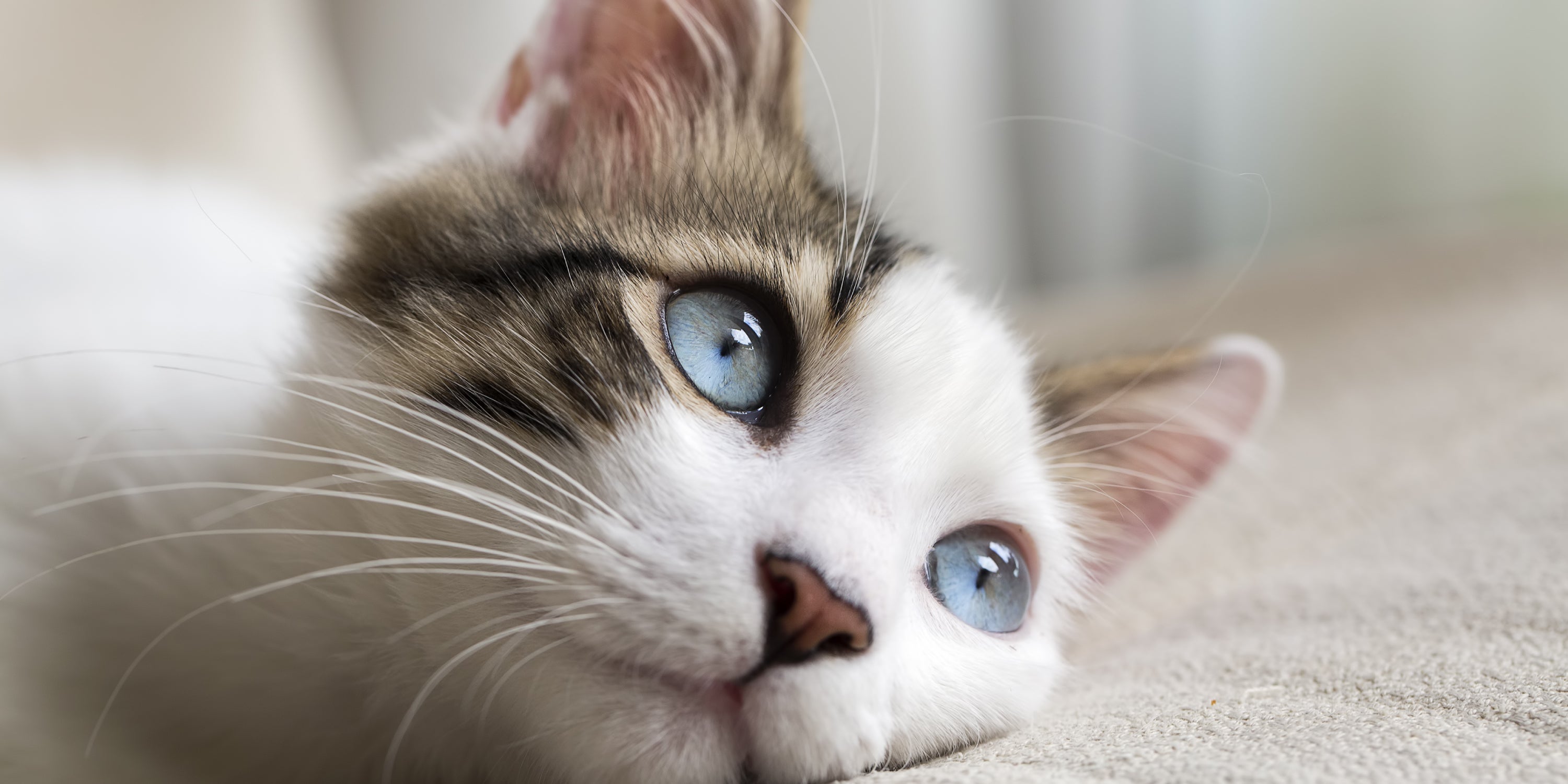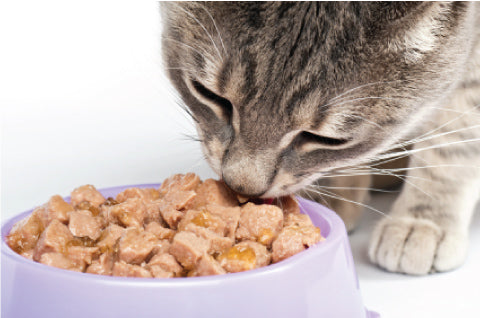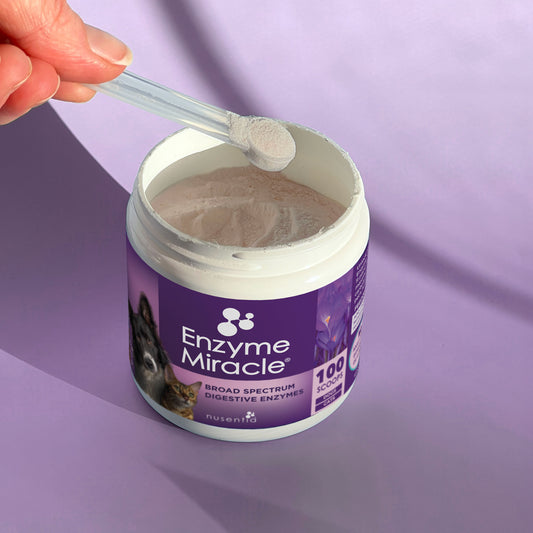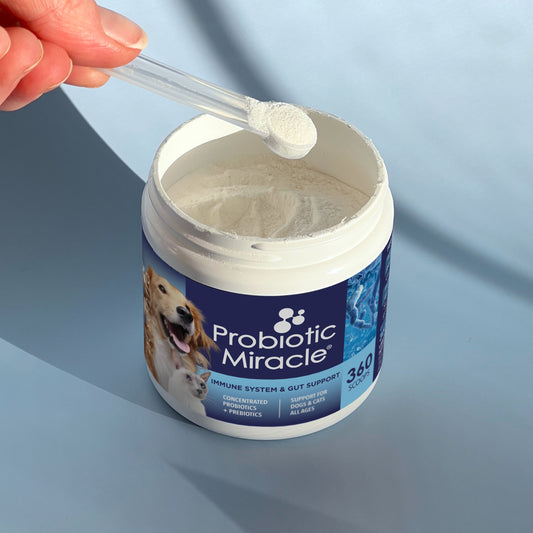
Tips for Yeast Infections in Cats
Welcome to our guide designed to support your pet's health naturally. Find a carefully curated selection of natural supplements below as well as tips to further assist you in managing Yeast Infections in Cats holistically.
-
Enzyme Miracle®
Regular price From $23.95Regular priceUnit price / per -
Probiotic Miracle®
Regular price From $25.95Regular priceUnit price / per
Collection: Yeast Infections in Cats
How to Get Rid of Yeast in Cats: Home Remedies
Are you wondering why your cat keeps getting yeast infections and searching for natural ways to combat this issue?
You're not alone. Many pet owners face the challenge of dealing with their cats' recurrent yeast problems. Yeast infections in cats can cause discomfort and health issues, so finding effective solutions that combat the root problem is crucial.
Overview
Yeast infections can occur in a number of locations in and on your cat, including the ears, skin, paws, kidneys, and the gut.
Maintaining a balanced gut ecology is a crucial home remedy for preventing cat yeast infections before they ramp up. Probiotics are your go-to solution for balancing the gut and keeping yeast growth at bay. Additionally, addressing potential allergies and toxin buildup in your cat's system can further help in managing yeast problems.
Understanding Yeast Infections in Cats
Yeast infections are a common concern among cat owners, often manifesting as a skin yeast rash or frequent infections on the paws or ears. These issues typically arise from an overgrowth of yeast, which is a symptom of underlying conditions like allergies, bacterial infections, poor diet, gut imbalance, and the overuse of prescriptions or antibiotics. In addition, many commercial cats foods contain inappropriate ingredients that can lead to yeast overgrowth in your cat due to their inability to process and digest them.
Yeast infections in cats can vary in severity and location, and thus, the treatment approach can differ. While systemic treatments, including oral medications or natural supplements, can be effective for overall yeast overgrowth, local or topical treatments are often necessary for specific areas, such as the ears.
Ear yeast infections as well as skin rashes, often caused by Malassezia, can lead to discomfort and more serious complications if not treated promptly and effectively. In such cases, using ear drops that are specifically formulated to combat yeast can provide direct relief and aid in quicker recovery. These ear drops may contain antifungal agents and other ingredients designed to reduce inflammation and clean the ear canal.
As stated before, addressing the root cause, diet and gut bacterial imbalance, can often times prevent an infection altogether. Digestive remedies can help bring balance back to your cat's system.

Why Does My Cat Keep Getting Yeast Infections?
The root cause of yeast overgrowth in cats is often linked to a poor diet, the overuse of antibiotics, or other factors that harm gut ecology. These elements disrupt the natural balance of your cat's gut, making it easier for yeast to thrive and lead to infections.
Natural Home Remedies for Cats with Yeast Issues
When your cat suffers from yeast infections, enhancing their overall immune function is essential. Natural remedies like probiotics and enzymes are highly effective at controlling yeast overgrowth.

Here's how you can use these remedies to support your cat's health:
The Importance of a Balanced Gut
Maintaining a balanced gut ecology is crucial in preventing yeast infections. Probiotics are your go-to solution for balancing the gut and keeping yeast growth at bay. Additionally, addressing potential allergies and toxin buildup in your cat's system can further help in managing yeast problems.
Probiotics and Enzymes
Probiotic Miracle® and Enzyme Miracle® work in tandem to break down yeast and build a healthy gut environment that resists yeast growth. These supplements are not only safe, but recommended daily for both kittens and adult cats.
For a comprehensive solution, consider the Miracle Pack®, which has been helping cats with yeast issues for over a decade.
Recognizing Yeast Infections in Cats
Signs of yeast issues in cats include excessive ear rubbing, waxy residue around the ear, scabby or reddened skin, unusual odor, and hair loss around the ear. If you notice these symptoms, consider the natural remedies mentioned and consult with your vet for a tailored approach.
Signs Your Cat is Producing Too Much Yeast
- Excessive rubbing of the ears or tilting of the head
- Waxy residue and scabbing around the opening of the ear
- Scabby, or reddened skin anywhere on body
- Yellow, or bloody discharge
- Unusual Odor
- Hair loss around the ear
- Appearance of Disorientation; loss of balance, hearing, walking in circles
Conclusion
While veterinary care may be necessary, natural remedies offer a viable and often preferable alternative for managing yeast infections in cats. By focusing on gut health and utilizing probiotics and enzymes, you may help prevent future yeast infections and support your cat's overall well-being.
Remember, it's essential to consult with your veterinarian before starting any new treatment plan, especially if your cat keeps getting recurring yeast infections. Your vet can provide guidance tailored to your cat's specific health needs.
Visit Nusentia® for natural, reliable pet health supplements with proven formulas to improve your furry friend's overall health. A trusted brand by veterinarians and pet parents since 2008.





